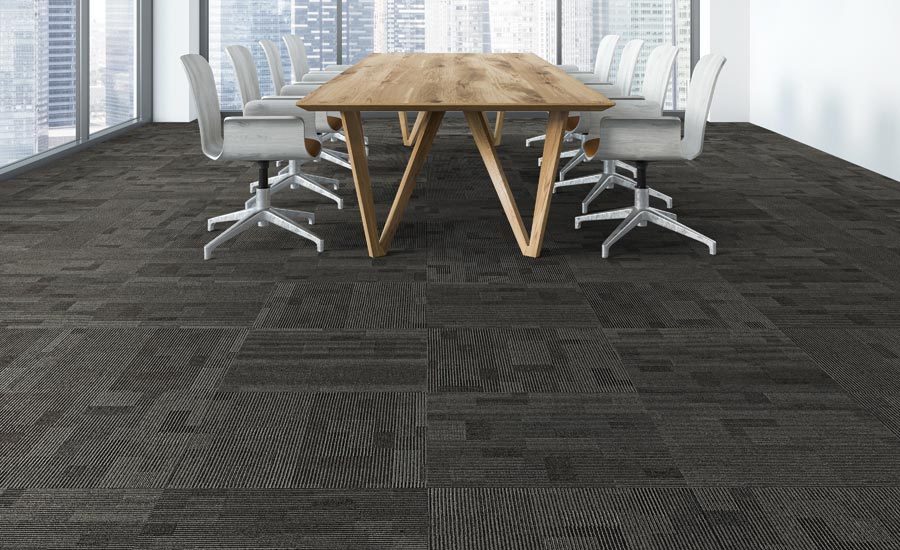Main Street Brings the Comforts of Home



Projects with high traffic will require flooring that’s commercial grade, such as Armstrong Flooring’s Rigid Core Vantage, shown here.





A new year brings fresh opportunity on Main Street for specialty flooring retailers, and manufacturers are following suit with product introductions that are expanding what’s possible through softer, more residential-like designs and competitive pricing.
“Commercial flooring is a key differentiator that retailers will need in order to grow their Main Street businesses in 2020,” said Amy Tucker, senior marketing manager, Shaw Floors.
Meredith Hafer, channel marketing manager, Armstrong Flooring, agrees: “Servicing Main Street needs offers flooring retailers an opportunity to grow their business by expanding their expertise into new markets. These projects can include flooring for medical and dental practices, accounting or law firms, restaurants and local retailers, day care centers, and public places like libraries and museums. While this can involve challenges, such as becoming familiar with commercial market specifications and requirements, there are also factors that play in retailers’ favor.”
The biggest trend? The blurring of lines between products that are considered strictly residential or commercial. While commercial projects may have more stringent requirements, the basic attributes are similar to what residential consumers are looking for in flooring: great-looking designs, durability to stand up to high traffic and everyday wear-and-tear, and easy installation and maintenance, Hafer said.
“There’s an ongoing design trend for commercial spaces to adopt a more residential look,” she said. “This ranges from designing offices that are warm and welcoming to healthcare spaces that make patients feel more at home and less stressed.”
“We’re seeing the most Main Street specifications in multifamily, patient rooms and retail sectors,” said Jenne Ross, director of marketing, Karndean. “Across all three of our LVT product constructions, wood visuals are dominant—perhaps reflective of the resimercial trend. Popular visuals and colors range from contemporary washed grays, to neutral mid-browns, to reclaimed rustics.”
One aspect that’s important for retailers to consider is how their Main Street customer’s space will be used. Although LVT and rigid core that’s primarily used in homes can be installed in some light commercial applications, projects with high traffic will require flooring that’s commercial grade, such as Armstrong Flooring’s Rigid Core Vantage or Natural Creations with Diamond 10 Technology. It’s also important to modify installation based on the type of environment and expected use. While some rigid core can be a floating floor, you may decide it would be best to use a glue-down installation method.
Choosing the right partners can help retailers to bridge the gap from residential to commercial projects. With a long history of manufacturing flooring for both residential and commercial customers, Hafer said Armstrong Flooring offers a portfolio of resilient products to support retailers’ Main Street initiatives, even if their needs can’t be met by traditionally residential products. This ranges from Armstrong Flooring’s colorful and durable VCT and PVC-free BBT to vinyl sheet flooring that can be heat welded to create a more hygienic environment for medical offices. Armstrong Flooring also has specialized products, such as slip-retardant flooring for an extra level of safety and static control flooring to help protect sensitive equipment.
While Philadelphia Commercial has been Shaw Floors’ Main Street solution for many years, the company is expanding its legacy through a new Main Street brand, 5th & Main.
“5th & Main stands for simplicity and ease of transaction, primarily servicing the dealer for retail, office, residential and educational end-use market segments,” Tucker explained. “Together with longstanding leader, Philadelphia Commercial, and its elevated design and service, retailers will experience new opportunities to expand their main street business in 2020, armed with the comprehensive products and solutions of these two offerings.”
5th & Main provides dealers with coordinating hard and soft surface modular flooring styles, intentionally designed to work together seamlessly.
“We’re seeing more sophisticated visuals available at lower price points,” Tucker said. “Designs and shapes inspired by the natural world will continue to trend. Many new product launches will bring the warmth and comfort of home into the workplace. Additionally, color blocking, art deco and other retro influences translated into more contemporary visuals will balance the desire for bold color with products that have broader appeal for various main street applications.”
On the soft-surface side, Aladdin Commercial introduces UltraSet matrix carpet tile backing and the continued use of EnviroStrand SDPET carpet tile.
“The broadloom category will remain flat; my goal is to introduce collections and a go-to-market strategy which continues to focus on our product coordination story—all broadloom, carpet tile and LVT collections will continue to share common colorways,” said Robb Myer’s, vice president of business development for Aladdin Commercial and Mohawk.
He said Aladdin is developing tools to assist the dealer in becoming a design asset to their customers: “We are investing in digital solutions, such as an updated website, to better present our collections. New deckboard layouts and architectural folders will tell the Aladdin Commercial coordination story. Our business development team will lead the charge in training and product updates with the dealer retail sales associates.”
Looking for a reprint of this article?
From high-res PDFs to custom plaques, order your copy today!












